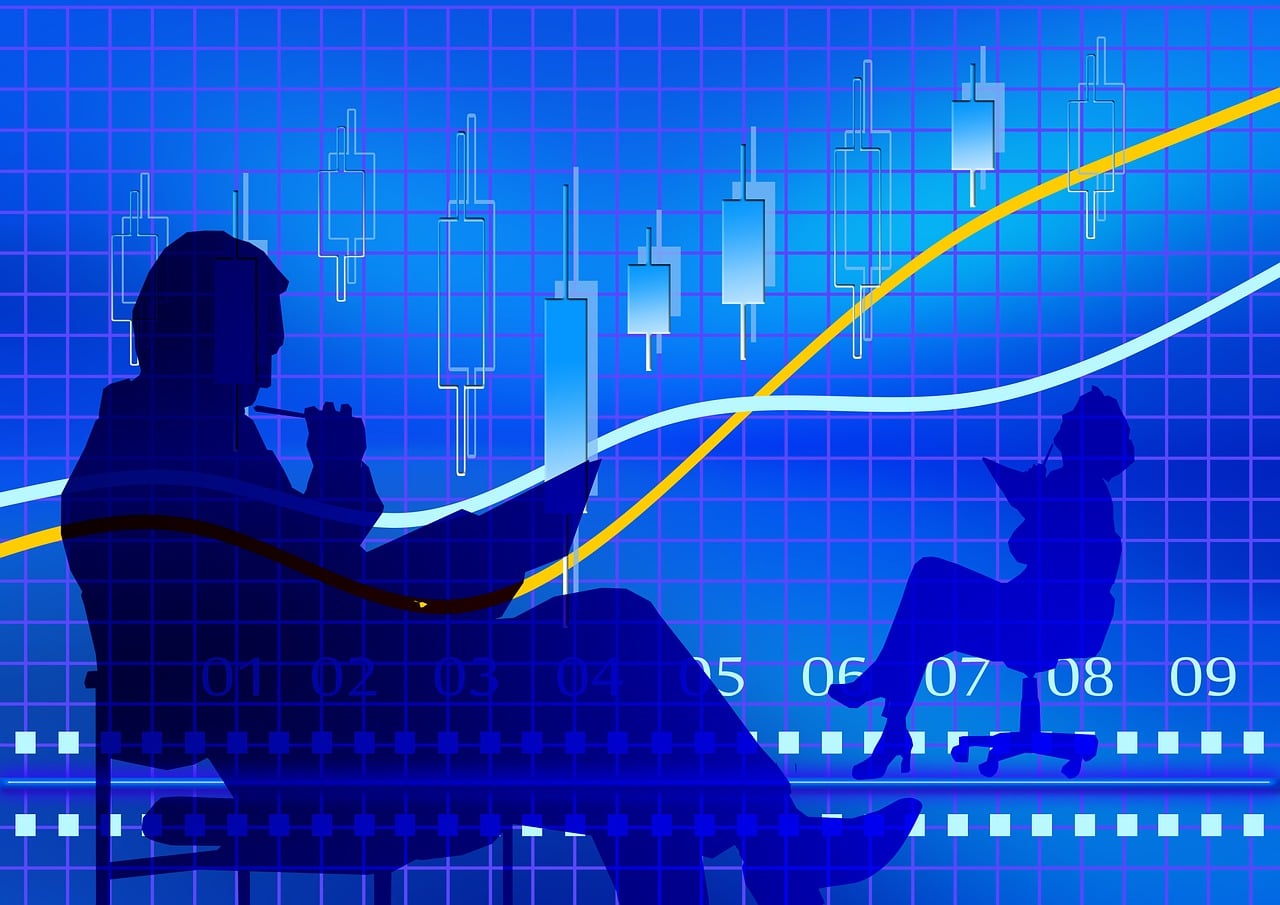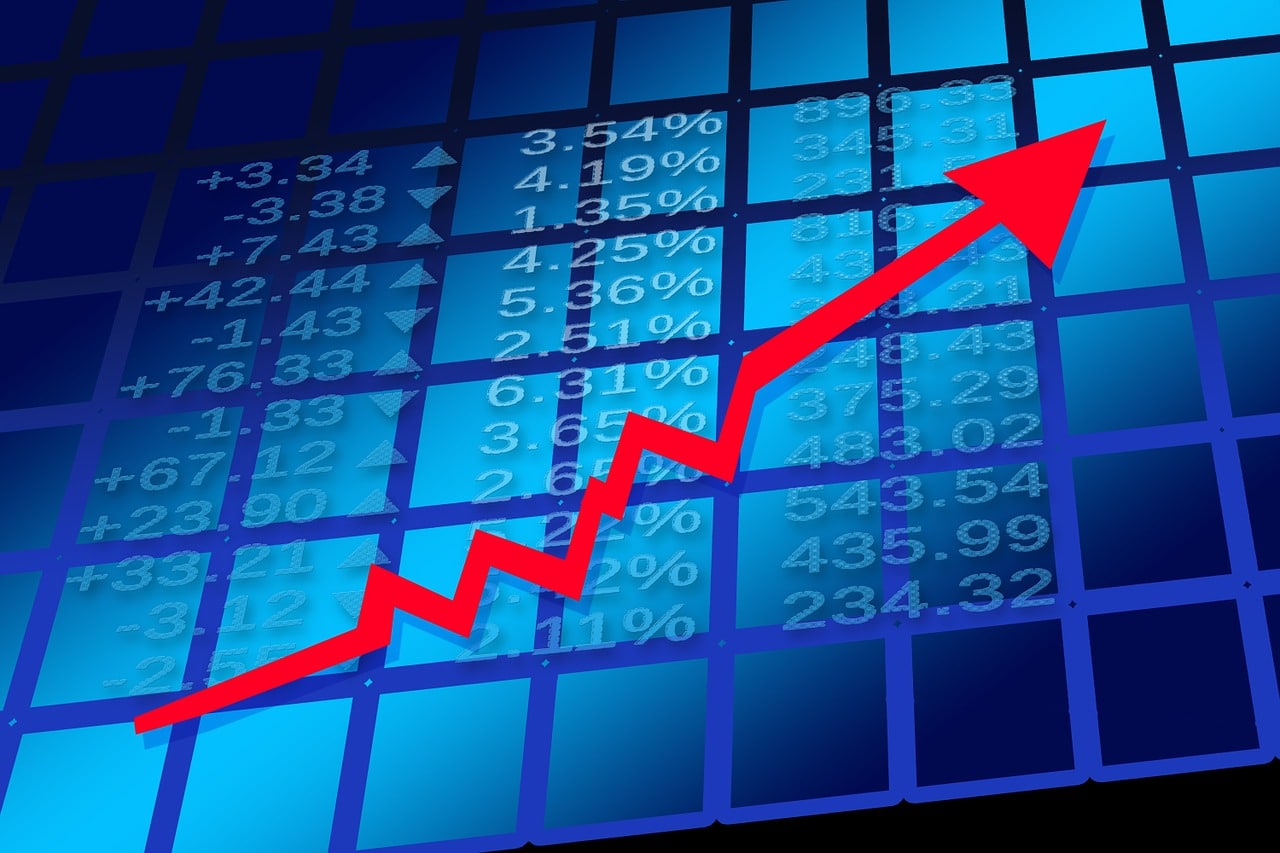
VIX is the code of the officially called Chicago Board Options Exchange Market Volatility Index (in Spanish: Chicago PUT options market volatility index). The VIX shows the implied volatility of the options on the index for a period of 30 days, for this it is calculated by taking the weighted average of the implied volatility of eight OEX call and put options (S&P 500 options).
When we have a very low VIX index, it means that volatility is very low and therefore there is no fear in the market, which makes stocks continue to rise timidly. The big drops in stocks come when a VIX is very low and begins to rise. There is no exact figure to indicate if the VIX is high or low, but many analysts say that a VIX below 20 means there is optimism and relaxation in the markets while a VIX above 30 means that there is fear in the market and we must be cautious with our operations.
The only constant in the stock markets is change. In other words, volatility is a constant companion for investors. Since the VIX index was introduced, with futures and options to follow, investors have had the option of trading this measure of investor sentiment regarding future volatility.
What are the ways to trade the VIX?
At the same time, realizing the generally negative correlation between volatility and stock market performance, many investors have sought to use volatility instruments to hedge their portfolios. Understanding various ways of operating on the VIX you have to take into account the starting point. In this sense, an important factor in the evaluation of exchange-traded funds (ETFs) and exchange-traded notes (ETNs) linked to VIX itself. The VIX is the symbol that refers to the Chicago Board Options Market Volatility Index. Although it is often presented as an indicator of stock market volatility (and is sometimes called the "Fear Index") it is not entirely accurate.
Volatility Index

Since the Chicago Board Options Market Volatility Index (VIX) was introduced, investors have traded this measure of investor sentiment on future volatility. The main way to operate the VIX is to buy exchange-traded funds (ETFs) and exchange-traded notes (ETNs) tied to the VIX itself.
There are many popular ETFs and ETNs that are related to the VIX, including the iPath S&P 500 VIX (VXX) Short-Term Futures ETN and the VelocityShares Daily Two-Times VIX (TVIX) short-term ETN. The VIX is a weighted mix of the prices of a mix of S&P 500 index options, from which the implied volatility is derived. In simple terms, the VIX really measures how much people are willing to pay to buy or sell the S&P 500, and the more they are willing to pay suggests more uncertainty.
This is not the Black School model, the VIX is all about "implied" volatility. What's more, while the VIX is most often discussed on a spot basis, none of the ETFs or ETNs out there represent the spot volatility of the VIX. Instead, they are collections of VIX futures that only roughly approximate the performance of the VIX.
A lot of options
The largest and most successful VIX product is the iPath S&P 500 VIX Short-Term Futures ETN. This ETN is long in the first and second month VIX futures contracts that are spread daily. Because there is an insurance premium on long-term contracts, the VXX experiences negative roll performance (basically, that means long-term holders will see a penalty on returns).
Because volatility is a media conversion phenomenon, the VXX often trades higher than it should during periods of low current volatility (pricing in an expectation of higher volatility) and lower during periods of high current volatility. (setting return prices to lower volatility).
The iPath S&P 500 VIX Medium-Term Futures ETN (ARCA: VXZ) is structurally similar to the VXX, but holds positions in fourth, fifth, sixth and seventh month VIX futures. Consequently, this is much more a measure of future volatility and tends to be a much less volatile game on volatility. This ETN typically has an average duration of around five months and the same negative swing performance applies - if the market is stable and volatility is low, the futures index will lose money.
Leveraged trading
For investors looking for more risk, there are more highly leveraged alternatives. The short-term ETN VelocityShares Daily two-times VIX (ARCA: TVIX) offers more leverage than the VXX, and that means higher returns when the VIX rises.
On the other hand, this ETN has the same negative roll performance issue plus a volatility lag issue - so this is an expensive buy and hold position and even Credit Suisse's (NYSE: CS) own product sheet on TVIX says "if you hold your ETN as a long-term investment, you are likely to lose all or a substantial part of your investment."
However, there are also ETFs and ETNs for investors looking to play the other side of the volatility coin. The short-term ETN iPath Inverse S&P 500 VIX (ARCA: XXV) basically seeks to replicate the performance of shorting the VXX, while the short-term ETN VIX Daily Inverse VIX (ARCA: XIV) similarly seeks the performance of going short. short one month weighted average VIX futures maturity.
Beware of the delay
Investors considering these ETFs and ETNs should realize that they are not great proxies for the performance of the spot VIX. In fact, when studying the recent periods of volatility in the S&P 500 SPDR (ARCA: SPY) and the changes in the VIX spot, one-month ETN proxies captured about a quarter to half of the daily movements of the VIX, while medium-term products did even worse.
The TVIX, with its two-stroke leverage, did better (matching roughly half to three-quarters of the return), but consistently provided less than double the return of the regular one-month instrument. Furthermore, due to the negative balance and volatility lag in that ETN, the fact that it held too long after periods of volatility began to significantly erode returns.
If investors really want to bet on the volatility of the stock market or use it as a hedge, the ETF and ETN products related to the VIX are acceptable but very flawed instruments. They certainly have a strong convenience aspect to them, as they trade like any other stock.
Put your trading skills to the test with a free stock simulator to ensure trades. Compete with thousands of traders and negotiate your way to the top of success! Present trades in a virtual environment before you start risking your own money. Practice trading strategies so that when you are ready to enter the real market, you have had the practice you need.
The Chicago Board Options Exchange Volatility Index (VIX index) attracts traders and investors because it often rises sharply when US equity markets crash. Known as the fear meter, the VIX index reflects the short-term market outlook for stock price volatility, as derived from S&P 500 option prices.
Futures markets

The challenge is that investors cannot access the VIX index. In this way, VIX ETFs exist, but they actually track VIX futures indices, which creates 2 major challenges:
VIX ETFs do not reflect the VIX index. By any measure, the VIX futures indices, and therefore the VIX ETFs, do a lousy job of emulating the VIX index. The VIX index is actually non-invertible, and in periods of a month or a year, the return pattern of VIX ETFs will differ radically from the VIX index.
VIX ETFs tend to lose money, significant money, long term… VIX ETFs are at the mercy of the VIX futures curve, on which they depend for their exposure. Because the typical state of the curve is bullish (spot), VIX ETFs see their positions decline over time. The decline in their exposure leaves them with less money to move on to the next futures contract when the current one expires. The process then repeats itself, leading to huge double-digit losses over the course of a typical year. These funds almost always lose money in the long run.
In the real world, traders stay in VIX ETFs for 1 day, not 1 year. VIX ETFs are short-term tactical tools used by traders. Products like the VXX
ETNs are incredibly liquid, often trading more than their total assets under management, or AUM, in 1 or 2 trading days. Traders speculate on VIX ETFs because they offer the best (or least worst) means of getting to the VIX index in the very short term. So-called "short term" VIX ETFs offer better 1-day sensitivity to the VIX index than "medium term" VIX ETFs.
Transactions in exchange-traded funds
VIX ETFs are not ETFs in the strict sense. They come in ETNs or product pool structures, not like traditional mutual funds. ETNs carry the (typically low) counterparty risk of issuing banks, whereas commodity pools issue at tax time.
VIX ETFs come in flavors other than the pure game described above. VIX Overlay ETFs hold large equity positions and an overlay of VIX futures exposure. Its objective is to limit the risk of the stock falling, but to either bear or try to minimize the high cost of long-term exposure to VIX futures.
So in conclusion, if you are looking to get exposure to the VIX for a couple of days, there are products out there for you, but perhaps more than any other corner of the ETF market - buyer beware!
The VIX is a measure of the expected volatility in the US stock market over the next 30 days. It is managed by the CBOE Global Markets company based on the price of various call and put options related to the S&P 500 index.
Call options allow someone to buy a stock or other asset at a certain price, called the strike price, at a certain time. Put options allow you to sell the share or asset at the strike price at a specific time.
Call options, which take their name from the call for delivery of the asset, go up in value when the asset price is more likely or expected to exceed the strike price, as they allow you to buy the stock at a bargain price. . Conversely, put options rise in value when the asset's price is more likely to be less than the strike price, since whoever has the options will be able to sell the asset for more than it is worth.
Option prices can be used effectively to capture investor sentiment about future fluctuations in the S&P 500. This measure is popularly known as the Wall Street Fear Meter, as it rises when people expect a sharp change in prices. of stocks that can make it difficult to invest rather than a smooth rise, fall, or stagnation in prices.
The evolution of the VIX
The VIX was first developed in the early 90s based on the S&P 100 index. It is not technically correct to say that the VIX has ever had an initial public offering, as it is not a stock that has gone through an IPO process. , but the index made its formal debut in 1993.
Since then, it has evolved in some technical aspects to better approximate future market volatility, and today it is based on the S&P 500 index. That index tracks the performance of the top 500 US companies on the stock market and, In itself, it is often seen as an indicator of overall market performance and is the basis for many index funds that allow investors to try to capitalize on general increases in stock market prices.
The CBOE has also introduced several other volatility indices, including a short-term volatility index called VXST, which is based on a nine-day analysis of the volatility of the S&P 500. Another index, the S&P 3-Month Volatility Index 500, or VXV, has a longer outlook, and the S&P 6 500-Month Volatility Index, or VXMT, looks at an even longer window.
Other CBOE volatility indices look at the performance of stocks in indices other than the S&P 500. For example, volatility indices are published by CBOE based on the technology-intensive Nasdaq-100 index, the famous Dow Industrial Average. Jones and the Russell 2000 Index, which focuses on 2.000 companies with relatively small capitalization, or full market value.
Historically, during typical market conditions, the VIX has been in the twenties, although it has been known to skyrocket to near or above 100 during various historical market events such as the 2008 financial crisis. When the VIX is trading for below 20 is normally seen as a sign of atypically low market volatility.
Trading the VIX
The term VIX trading refers to making financial transactions in which money will be made or lost based on the direction of the VIX. That is, you are essentially making a prediction about the increase or decrease in market volatility and are preparing to make or lose money if that prediction comes true.
There are several ways to trade based on your expectations for the VIX and you can trade them based on your needs in the investment world. Where they will not always be the same in every moment and situation. So that in the end you can obtain the results you expect in each of the operations in the equity markets from now on. It is normally seen as a sign of atypically low market volatility.